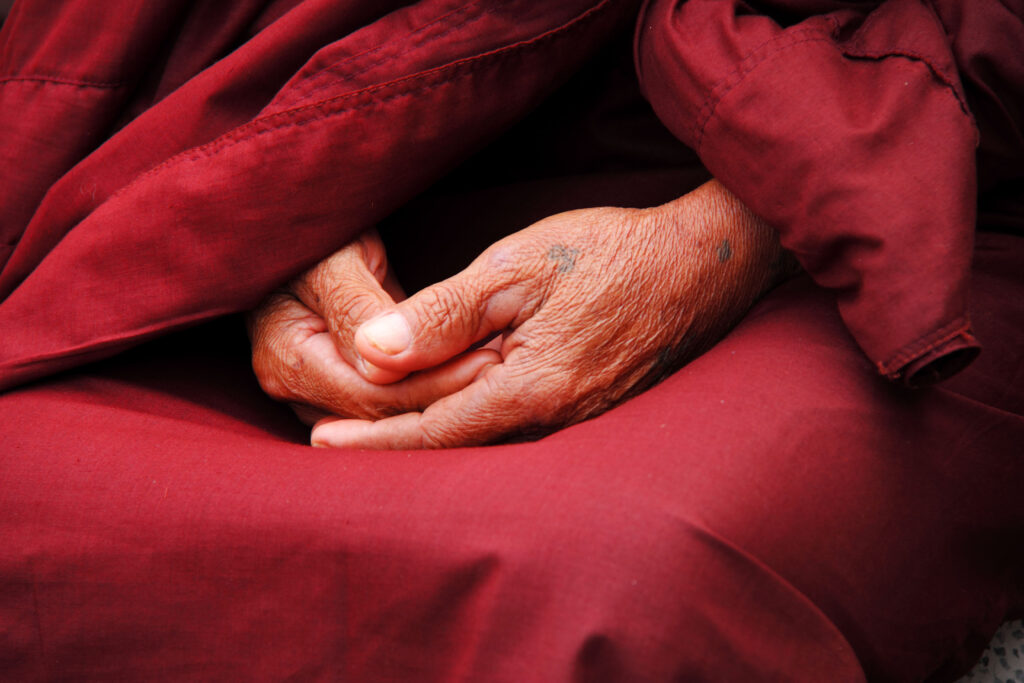

This website is dedicated to the Jonang Dharma.
This website is dedicated to the Jonang Dharma. We provide free downloads of Jonang literature. We work on collecting the scanned files, organizing them in a systematic manner, and making the scanned pictures available in the text format. Text format enables searching, copying and pasting and therefore is very useful to whoever interested in Jonang Dharma. We use OCR technology and human typing to produce text files. Currently, more than 100,000 and counting pages of materials are available to download here. We are all volunteers and anyone can download any file on this site for free.

Jonang Dharma
A General Explanation of Buddha’s Teaching
was written by Dolpopa, the master of the Jonang sect, one of the five main sects of Tibetan Buddhism. It is his first work on the view of “Empty of Other,” elucidating the core meaning of Buddhism.
Maitreya’s Five Treatises
Besides organizing, digitizing and translating the works of the two Jonang patriarchs–Dolpopa & Tāranātha–we also work on clarifying Maitreya’s Five Treatises, because the Jonang Dharma literature often cites these five treatises, but their English and Chinese translations contain some critical misinterpretations. Therefore, in order to properly understand the Jonang Dharma and explain the critical points, we will provide each treatise’s parallel comparisons of Sanskrit, Tibetan, Chinese, English and other languages. We will upload the comparison files for download when they become available.


Jonang Patriarch – Dolpopa’s complete works
Dolpopa was one of the most important thinkers in Tibetan history. He is often seen as the founder of the Jonangpa tradition of Tibetan Buddhism. Dolpopa taught the teaching on emptiness view known as Shentong (gzhan stong), which is tied to the Tathagatagarbha tradition and the Indian Yogacara school. Three collections of his complete works as scanned pictures can be downloaded in their entirety here: Pe Cin, ‘Dzam Thang & Gyantse editions. We have completed the Pe Cin editin OCR and its text files can be downloaded too.
Jonang Patriarch – Tāranātha’s complete works
Tāranātha was was one of the most consequential figures in the Jonang tradition of Buddhism, and one of the foremost scholars, historians, and statesmen of 17th-century Tibet. We provide Three complete collections of his works: the Pe Cin, ‘Dzam Thang & Ladakha editions. You can download the scanned picture files of all three editions here. The OCR text files are ready to download for the Pe Cin edition, and we will upload the text files of other editions when available.

About Jonang Dharma Volunteers
01
We are a group of volunteers
We are a group of volunteers, who after discovering the astonishing treasure of Jonang Dharma, have decided to dedicate our time and effort in making Jonang Dharma known to more people.

02
Jonang Dharma is important for its precious “eight-consciousnesses” teachings
Jonang is an important sect in Tibetan Buddhism, but its monks and temples were killed and confiscated in the mid-17th century, and its literature was banned and destroyed at the same time. Some Jonang literature, in the form of broken wood blocks and handwritten folios, was excavated and brought to the western world in the 1990’s, and its rich teachings were discovered. Through a series of effort, the blocks and folios were scanned, but most of them remains pictures. We at this website work on collecting the scanned files, organizing them in a systematic manner, and making the scanned pictures available in the text format in order to facilitate searching, copying and pasting. We do this to provide free service to anyone who is interested in Jonang Dharma. Anyone can download any file on this site for free.
03
We provide free download of Dolpopa’s, Tāranātha’s and Maitreya’s works
Besides organizing, digitizing and translating the works of the two Jonang patriarchs–Dolpopa & Tāranātha–we also work on clarifying Maitreya’s Five Treatises, because the Jonang Dharma literature often cites these five treatises, but their English and Chinese translations contain some critical misinterpretations. Therefore, in order to properly understand the Jonang Dharma and explain the critical points, we will provide each treatise’s parallel comparisons of Sanskrit, Tibetan, Chinese, English and other languages.
Buddhist pictures free download→
04
We use OCR and human typing to make text files
OCR technology by its nature is not 100% accurate, and our subsequent correction by human eyes may contain errors despite our best effort and intention. If you would like to point out errors to us, or provide any suggestion, please contact us. Thank you.

